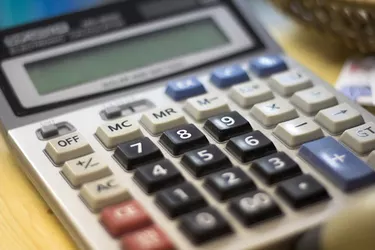
In 1921, the cost of a one-pound loaf of bread ran anywhere from 5 cents to 12 cents; 12 cents being equivalent to about $1.55 in 2021 currency. This large increase in price over 100 years is due to changes involving a number of factors: inflation, cost of materials, cost of production, taxes, shipping costs and exchange rates, among others. While this data may seem like a curiosity, understanding cost escalation formulas is a critical part of financial planning, especially with projects planned over multiple years.
What Is Cost Escalation?
Video of the Day
Cost escalation is shown in the example above: the change in the cost or price of a certain good or service over a defined period of time. Cost escalation is not the same thing as inflation. While, on average, cost escalation and inflation move hand in hand, cost escalation is usually looking at a specific limited good or service. Thus, it is also affected by changes in supply, demand and other factors relating specifically to that product.
Video of the Day
Cost escalation can be found using a number of established indices with historical data; based on this, an estimate can be made regarding the increase in prices of certain categories over a future period. For example: the Chemical Engineering Index (CE) provides reference indices for process plant construction, categorized by equipment, labor, buildings and engineering design & supervision.
If a company is looking to build a new facility, a project that will be spread over a few years, they can use these indices to predict how the costs of their project will increase over time due to general finance conditions (as opposed to, say, scope creep).
Cost Escalation Formulas
In order to calculate price escalation, you'll need to calculate the escalation percentage corresponding to that particular good, service or product using a reference index. The Consumer Price Index (CPI) is provided by the Bureau of Labor Statistics (BLS) and captures the average change in cost of a specific market basket of goods and services. Additional indices like the CE exist for more specific areas of industry, such as construction, where supply and demand can affect prices far outside of inflation. You'll want to choose an index that represents the categories in your particular budget and in your particular country and market.
To start, you'll also want to choose the time period over which you'll calculate your escalation percentage. Some indices predict cost escalation for future years; others might encourage you to look at the past 2 to 5 years for your prediction. For this example, you're planning a project in 2021, and your team has decided to use the years 2015 to 2020 to represent cost escalation over a 5-year period.
Example Index in 2015: 4000
Example Index in 2020: 4137
Index change over 5 years: 137
Percentage change over 5 years = (137) / (4000) = 0.03425 = 3.425 percent over 5 years
Important Considerations for Escalation Factor Formula
Keep in mind that this 3.425 percent calculated in the above example is for the 5-year period. Since interest compounds on itself, you can't just take (0.03425)/5 and calculate an annual rate; your team will have to determine how to distribute this over your 5 years, or use the compound interest equation to back out an annual rate.
This escalation percentage is usually included as its own line in a budget estimate, allowing all parties to understand the assumptions made for cost increases and how they'll affect longer-running projects. You can use an escalation rate calculator to determine these figures, as well. Understanding the cost escalation formula is an important part of budgeting.
Consider also: How to Convert Annual Inflation to Monthly Inflation